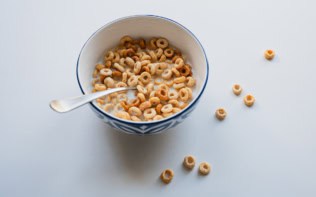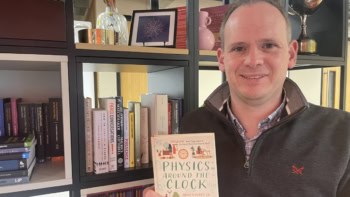By Hamish Johnston
The bacterium in the video above has an image problem that’s forcing it to go round in circles.
I’m not speaking in metaphors; physicists in Italy are the first to notice that certain bacteria move in anti-clockwise loops when they swim close to the surface of a liquid.
Roberto Di Leonardo and colleagues also watched as E. coli swam in a clockwise direction when they were very close to the bottom of a water-filled dish – something that others had already seen.
This behaviour is puzzling because the little creatures manage to swim in straight lines when they are a good distance away from either the top or bottom of a dish.
Now, Di Leonardo and colleagues at the University of Rome Sapienza think they know why, and have published a paper in Physical Review Letters outlining their theory.
The bacterium propels itself by spinning a whip-like flagellum that acts much like a ship’s screw. The presence of a solid interface below – or an air interface above – the bacterium disrupts the movement of fluid around the bacterium. It turns out that the effect of this disruption can be modelled by removing the interface and replacing it with a mirror image of the swimming bacterium.
The effect of a mirror image is a torque on the real bacterium causing it to swim in a clockwise manner if it is close to the bottom. The image has the opposite effect when the bacterium swims close to the surface.
The analysis also suggests that long rod-like bacteria swim in larger circles than stubby bacteria.
Understanding this effect could prove very important in creating bacteria ratchets, which prevent some or all motile bacteria from passing through a barrier. Such ratchets could prove useful in preventing the spread of disease.



